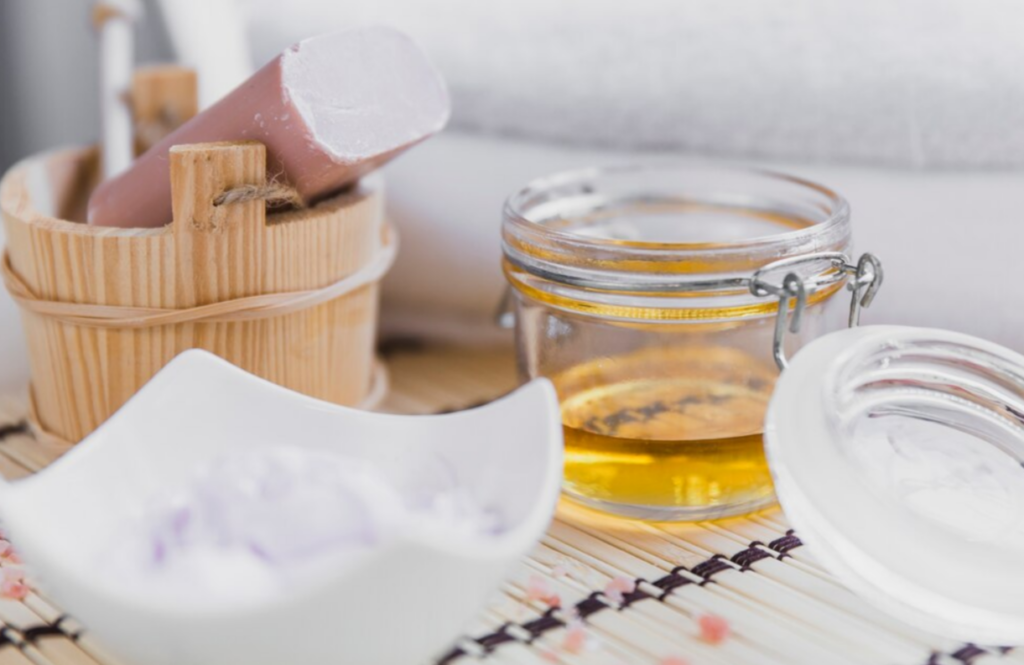Vinegar Soak for Toenail Fungus: Can It Cure Toenail Fungus?
Contents

Toenail fungus, also known as onychomycosis, is a common and often persistent condition that affects millions of people worldwide. While it can be embarrassing and difficult to treat, several natural remedies have gained popularity, with one of the most talked-about being the vinegar soak for toenail fungus.
In this article, we will explore how vinegar works to combat toenail fungus, the benefits of using it, and how to properly use a vinegar soak to get the best results. Whether you’re dealing with toenail fungus yourself or just curious about alternative treatments, keep reading for all the information you need.
What is Toenail Fungus?
Toenail fungus is an infection caused by various types of fungi, including dermatophytes, yeasts, and molds.
These fungi thrive in warm, damp environments, making your feet an ideal breeding ground for them, especially if they are often enclosed in shoes. Symptoms of toenail fungus include
- Discoloration of the nail (usually yellow or brown)
- Thickening of the nail
- Brittle or crumbly nails
- A foul odor
- Distorted shape or growth of the nail
Toenail fungus can be quite stubborn to treat, often requiring weeks or even months of consistent treatment. This is where a simple, yet effective, home remedy like a vinegar soak can come into play.
How Does Vinegar Help with Toenail Fungus?
Vinegar, especially apple cider vinegar (ACV), is a natural product that has been used for centuries for its numerous health benefits. When it comes to toenail fungus, vinegar works in several ways
1. Antifungal Properties
Vinegar, particularly apple cider vinegar, contains acetic acid, which has antifungal and antimicrobial properties. This acid can help kill the fungi causing the infection, preventing it from spreading further. The acidity also creates an inhospitable environment for fungi, which thrive in more neutral pH levels.
2. Balancing pH Levels
Toenail fungus thrives in environments that are too alkaline. Vinegar’s acidic nature helps to restore the pH balance of your nails and skin, making it harder for the fungi to survive and reproduce.
3. Cleansing and Detoxifying
Vinegar is a natural cleanser, which can help remove debris, dirt, and dead skin cells around the toenail that may harbor fungi. Regular use can also assist in detoxifying the skin, keeping it healthy and free from infection.
What You’ll Need for a Vinegar Soak
If you’re ready to try a vinegar soak for toenail fungus, the good news is that it’s simple to prepare. Here’s what you’ll need:
- Apple Cider Vinegar (ACV) – The most commonly used type of vinegar for fungal infections. ACV contains the highest concentration of beneficial enzymes and acetic acid.
- Water – Diluting the vinegar with water is important to prevent skin irritation, especially for sensitive skin.
- A Basin or Bowl – To soak your feet comfortably.
Optional ingredients
- Tea Tree Oil – Known for its antifungal properties, tea tree oil can be added to enhance the effects of the soak.
- Epsom Salt – Helps to relax the feet and can also promote healing.
How to Do a Vinegar Soak for Toenail Fungus?
To perform a vinegar soak, follow these simple steps
1. Prepare the Soak
- Take a basin or bowl large enough to fit both feet comfortably.
- Mix 1 part apple cider vinegar with 2 parts warm water. This dilution is ideal for reducing the risk of skin irritation while still delivering antifungal benefits.
- Optional: Add 2-3 drops of tea tree oil and a tablespoon of Epsom salt to the solution. Tea tree oil is known for its natural antifungal and antiseptic properties, while Epsom salt helps soothe the skin.
2. Soak Your Feet
- Place your feet in the soak for about 15 to 20 minutes. Make sure that the affected toenail is submerged in the solution as much as possible.
- While soaking, gently rub the infected toenail with your fingers or a soft brush to help loosen debris and fungal buildup.
- Relax and let the vinegar solution work its magic.
3. Dry Your Feet Thoroughly
- After soaking, remove your feet from the solution and pat them dry with a clean towel.
- Fungi thrive in moist environments, so it’s essential to keep your feet dry after the soak. Make sure to dry between your toes and under your nails as well.
4. Repeat the Process
- For best results, repeat the vinegar soak daily. Depending on the severity of the infection, it may take several weeks to see noticeable improvement.
- Be consistent with the soaks and keep your feet clean and dry between treatments.
Additional Tips for Treating Toenail Fungus
While a vinegar soak can be incredibly effective, there are other steps you can take to boost the effectiveness of your treatment and promote faster healing
1. Trim and File Your Toenails
Trimming the affected toenail regularly will help prevent the fungus from spreading and make it easier for the vinegar to reach the infected areas. You can also file the top of the nail to remove any thickened, damaged tissue.
2. Use Antifungal Creams or Ointments
If the vinegar soak isn’t enough on its own, consider using an antifungal cream or ointment in conjunction with the soak. Over-the-counter antifungal treatments like clotrimazole or terbinafine can help speed up the healing process.
3. Keep Your Feet Dry
Since fungi thrive in moist conditions, it’s important to keep your feet dry, especially between the toes. Wear moisture-wicking socks, change socks frequently, and avoid walking barefoot in damp places like public showers or swimming pools.
4. Wear Breathable Footwear
Choose shoes made from breathable materials like leather or canvas, as these will help keep your feet dry. Avoid tight-fitting shoes that may trap moisture and provide an ideal breeding ground for fungi.
5. Disinfect Your Nail Tools
Always disinfect your nail clippers, scissors, and files before and after use. This helps prevent reinfection and stops the spread of the fungus to other nails.
How Long Does It Take to See Results?
The time it takes to see improvement when using a vinegar soak for toenail fungus can vary based on several factors, including the severity of the infection and how consistently you perform the soaks.
Some people may notice improvement within a few weeks, while others might take a few months to see significant results. Patience is key when treating toenail fungus, and consistency with your soaks will increase your chances of success.
Final Thoughts
A vinegar soak for toenail fungus is a simple, natural, and affordable treatment that has shown promise in helping to combat fungal infections.
By taking the time to properly soak your feet in a diluted vinegar solution and maintaining good foot hygiene, you can increase your chances of successfully treating toenail fungus at home.
Always remember that consistency is crucial, and results may take time, but with persistence, you can improve the health and appearance of your toenails.
If you’re looking for an affordable, easy-to-prepare remedy, the vinegar soak is a great place to start. Whether you opt for apple cider vinegar, add some tea tree oil, or incorporate other tips into your treatment routine, you’ll be one step closer to healthier, fungus-free nails.



